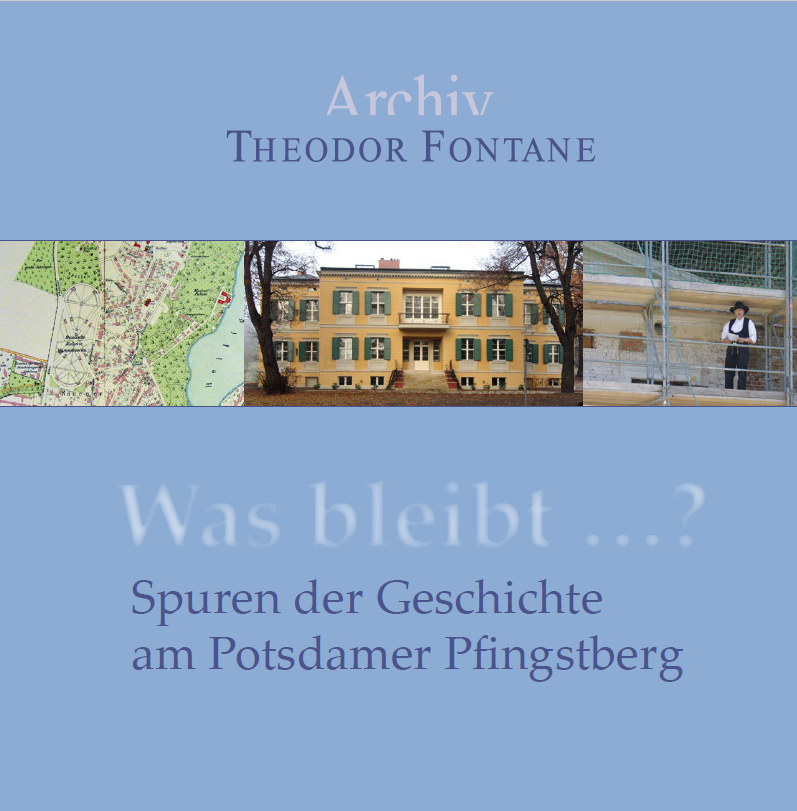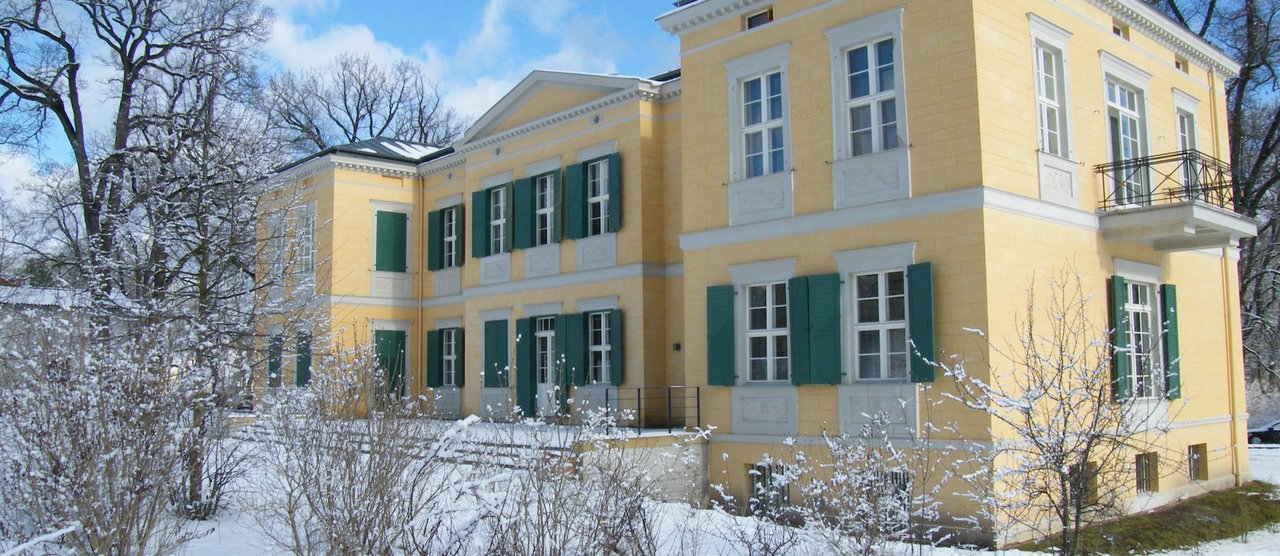Villa Quandt
The Villa Quandt is located in the historic park landscape of Potsdam’s Pfingstberg, which, together with the Belvedere and nearby Cecilienhof Palace in the New Garden, is part of the Unesco World Heritage Site ensemble managed by the »Stiftung Preußischer Schlösser und Gärten« (Prussian Palaces and Gardens Foundation Berlin-Brandenburg). In the immediate vicinity are the »Lepsiushaus« and the »Gedenk- und Begegnungsstätte Leistikowstraße Potsdam« (Memorial Site Leistikowstraße). The Russian Colony, the Alexandrowka, is within walking distance. It dates from the time of Frederick William III and includes the Alexandrowka Museum and the historic Jewish Cemetery.
Together with the Villa Henckel and the Villa Lepsius, the Villa Quandt belongs to the most stately of the Nauener Suburb’s Villas. It is not known by whom and when the villa was built. The oldest structural evidence stems from the time around 1800, verifiable structural alterations from the years between 1831 and 1833. The villa got its name from the war councilor Ulrika Augusta von Quandt, who acquired the property in 1833, but sold it again only two years later.
Owned by the royal family since 1841 , the building was integrated into the park at the Pfingstberg in 1860. It received its present structural form in the course of the remodeling carried out by Prince Oskar Karl Gustav Adolf of Prussia, the fifth son of Wilhelm II, who inhabited the building with his family following his nuptials in 1914.

To learn more about the Villa and the neighborhood, see the publication from the Theodor Fontane Archive Was bleibt …? Spuren der Geschichte am Potsdamer Pfingstberg (Potsdam 2008). You can acquire this broschure here.
Following the occupation of Potsdam by the Soviet troops in 1945, Villa Quandt was located in a restricted military area and subsequent headquarters of the military administration, which became known as the so-called Military Town No. 7. It has not yet been possible to determine what uses Villa Quandt was put to during this time. After the withdrawal of the Soviet army and the acquisition of the Villa from the »Stiftung Preußische Schlösser und Gärten Berlin-Brandenburg« in 1993/94, extensive demolition and protection measures took place.
The rescue and restoration of Villa Quandt for use by the Theodor Fontane Archive finally succeeded with funding from the Hermann Reemtsma Foundation, Hamburg, and the European Fund for Regional Development.
The building was ready for occupancy in September 2007. Along with the Fontane Archive, it also houses the »Brandenburgisches Literaturbüro«.












